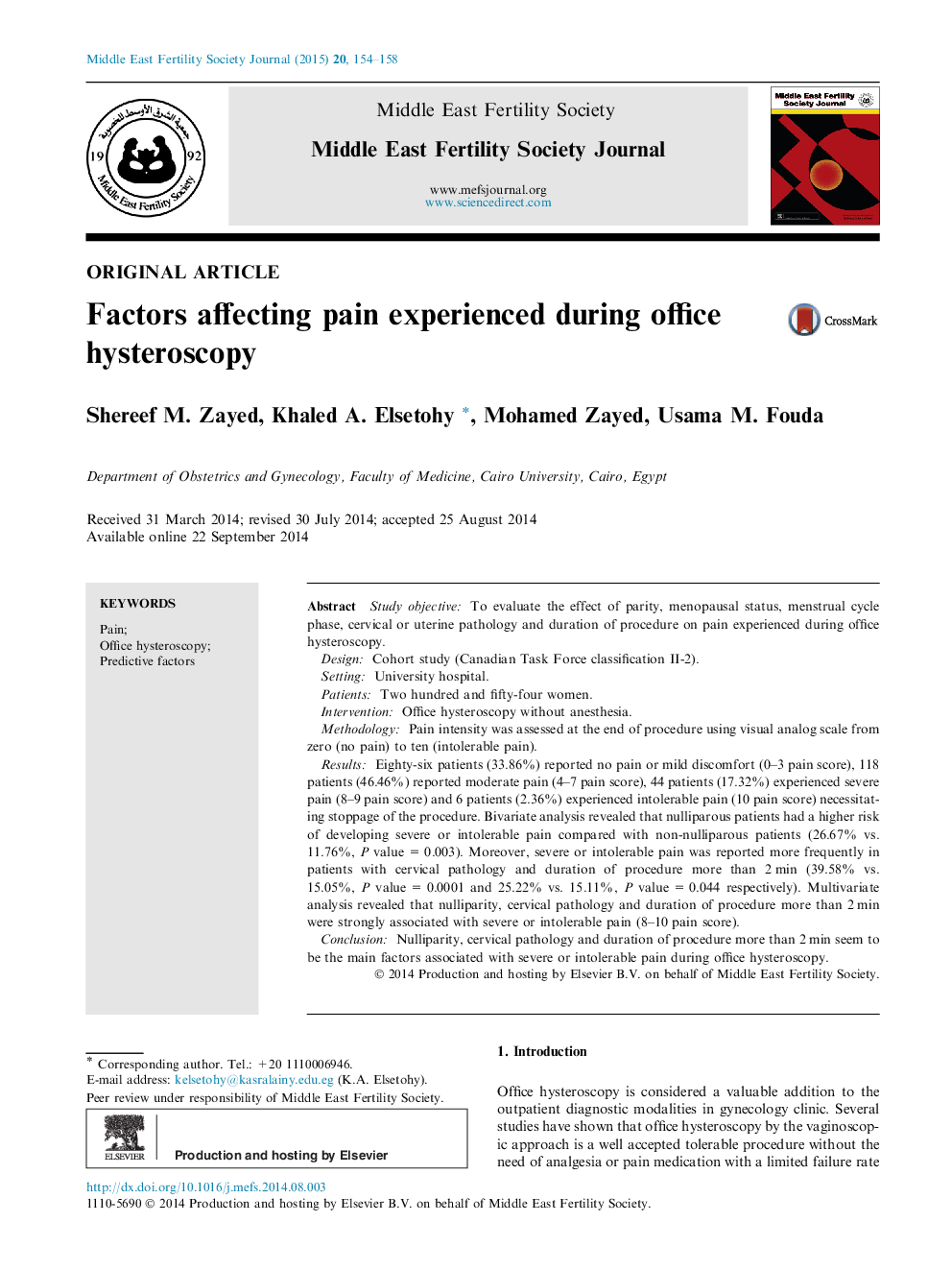| Article ID | Journal | Published Year | Pages | File Type |
|---|---|---|---|---|
| 3966096 | Middle East Fertility Society Journal | 2015 | 5 Pages |
Study objectiveTo evaluate the effect of parity, menopausal status, menstrual cycle phase, cervical or uterine pathology and duration of procedure on pain experienced during office hysteroscopy.DesignCohort study (Canadian Task Force classification II-2).SettingUniversity hospital.PatientsTwo hundred and fifty-four women.InterventionOffice hysteroscopy without anesthesia.MethodologyPain intensity was assessed at the end of procedure using visual analog scale from zero (no pain) to ten (intolerable pain).ResultsEighty-six patients (33.86%) reported no pain or mild discomfort (0–3 pain score), 118 patients (46.46%) reported moderate pain (4–7 pain score), 44 patients (17.32%) experienced severe pain (8–9 pain score) and 6 patients (2.36%) experienced intolerable pain (10 pain score) necessitating stoppage of the procedure. Bivariate analysis revealed that nulliparous patients had a higher risk of developing severe or intolerable pain compared with non-nulliparous patients (26.67% vs. 11.76%, P value = 0.003). Moreover, severe or intolerable pain was reported more frequently in patients with cervical pathology and duration of procedure more than 2 min (39.58% vs. 15.05%, P value = 0.0001 and 25.22% vs. 15.11%, P value = 0.044 respectively). Multivariate analysis revealed that nulliparity, cervical pathology and duration of procedure more than 2 min were strongly associated with severe or intolerable pain (8–10 pain score).ConclusionNulliparity, cervical pathology and duration of procedure more than 2 min seem to be the main factors associated with severe or intolerable pain during office hysteroscopy.
